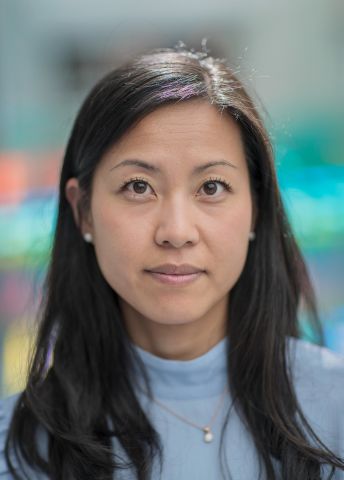
Sidinh Luc
PhD Biomedicine
Wallenberg Academy Fellow 2016
Institution:
Karolinska Institutet
Research field:
Blood stem cells


Wallenberg Academy Fellow 2016
Institution:
Karolinska Institutet
Research field:
Blood stem cells
Luc carefully lifts a culture plate out of the incubator in the new Neo research laboratory at Karolinska Institutet in Huddinge, south of Stockholm. Blood stem cells are growing in the wells of the plate, which each holds a single drop of culture media. She places the plate under the microscope and examines it curiously.
“It’s looking good. They’re growing as expected,” she says.
Blood stem cells are the stem cells from which other blood cells develop. They are found in the bone marrow, and have the unique ability to divide and form specialized blood cells – platelets, red blood cells and various types of white blood cells.
It was long thought that all blood stem cells were identical, and could produce blood cells of all types to the same degree. But just over ten years ago it was discovered that this is not so.
It was found that there were different kinds of blood stem cells, maturing into different kinds of mature blood cells.
As a Wallenberg Academy Fellow, Luc wants to learn more about this process, which is still poorly understood. She characterizes different blood stem cell types and is trying to understand more about how they are regulated.
“Setting up my own research team is a big step. Such generous long-term funding will enable me to assemble the right team, give proper consideration to the methods we will use, and carry out the research thoroughly, including the experiments I need to perform.”
“We want to examine these cells in greater detail, see which mature blood cells they produce, and whether some types divide more quickly in certain situations. If we can find out how blood stem cells are regulated in normal circumstances, this will help us to understand how different forms of blood cancer may develop,” she says.
Luc studied for her first degree at Lund University. She began research on blood stem cells during her time as a PhD student, most of which she spent at University of Oxford and also at Lund University. During her time as a postdoc at Dana-Farber/Boston Children’s Cancer and Blood Disorders Center in the U.S. she concentrated her research on detailed studies of blood stem cells.
But although she found the field to be of great interest, she gave more priority to other projects. The techniques available for examining the cells were not considered to be sufficiently refined.
“The blood stem cells we want to isolate are so few – there are about a thousand in the mouse models we are using. We need techniques capable of analyzing samples containing only a few cells,” she explains.
Rapid technical advances have been made, and as Luc puts together her research team, there are powerful methods available to answer the questions in which she is interested. Flow cytometry, which is a method she often uses to examine and sort cells, has been refined, and DNA can be sequenced in a single cell.
Luc’s research involves studying blood stem cells that have been isolated from mice, and monitored with the help of genetic markers. Each stem cell is genetically marked in a unique way. The marking accompanies the cell when it divides, so the researchers can trace the stem cell that each mature cell came from.
“We’re trying to mark each stem cell so we can monitor them – see how quickly they produce the mature cells, and what kind,” she says.
It is not quite as easy as it sounds. As mentioned, blood stem cells are few in number. Also, the dividing lines between the various types of stem cells are not clearly defined. So the cells cannot always be classified into one type or another, which makes it more difficult to interpret the results.
In her research, Luc is also trying to understand the factors regulating the development of different blood stem cells – what is it that causes a stem cell to become a certain type of cell? The hypothesis is that epigenetic factors are involved.
Epigenetic factors are mechanisms capable of regulating the genes in the cell that are turned off and on. They are passed on from cell to cell when cells divide, but are independent of changes in the DNA sequence itself. What might instead happen is that chemical groups bind to the DNA molecule and regulate the degree to which certain genes are available for decoding.
Epigenetic factors determine which genes are activated, and by doing so, they determine that one cell will become a liver cell, while another will be a hair cell – and perhaps also what causes a blood stem cell to become a certain type.
To study this, Luc wants to find out which epigenetic factors are most common in some different stem cell types, and then examine them in greater detail. Ultimately she hopes that this knowledge will create a better understanding of the causes of leukemia, a form of blood cancer.
“It may be that leukemia develops because some epigenetic factors are misregulated, so that too many of a certain type of blood stem cells are formed,” she says.
Luc moved from the U.S. to Karolinska Institutet in Sweden in 2017. She is now carefully assembling her research team. She herself still spends a considerable portion of her time in the laboratory. She is driven by a desire to learn more, and appreciates the freedom to decide over her own research.
“It’s incredibly rewarding to be able to plan autonomously – from a question you don’t know much about, to how we should design our experiments to find out the answer. It’s a really exciting challenge,” she enthuses.
Text Sara Nilsson
Translation Maxwell Arding
Photo Magnus Bergström